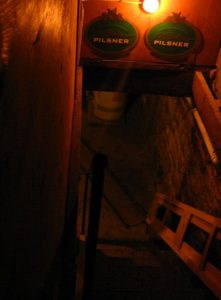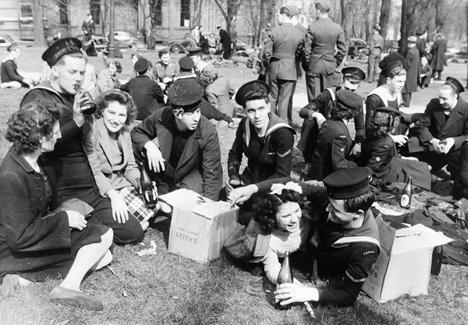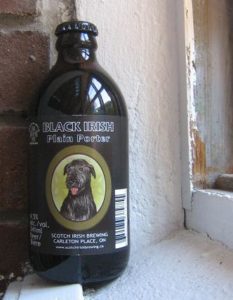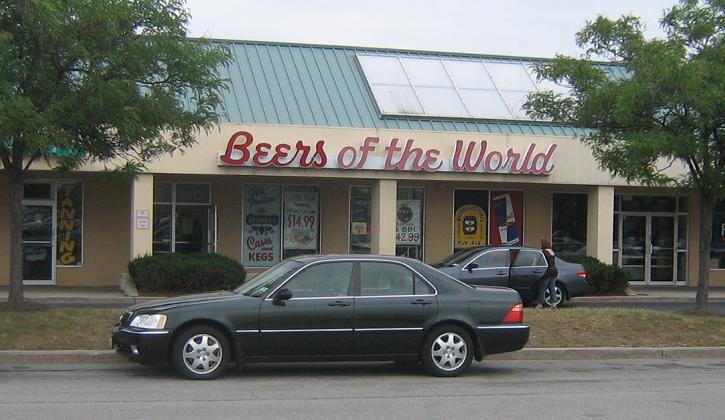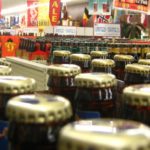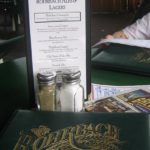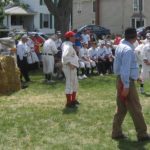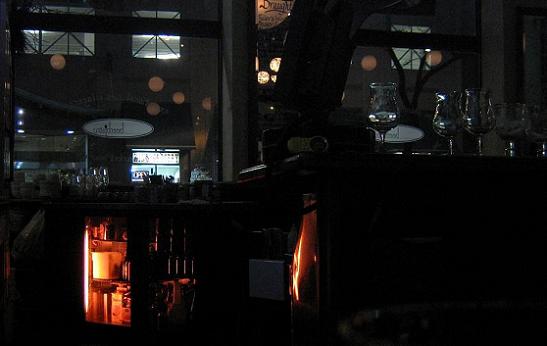
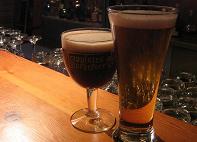 As a result, I build up some presumptions. One was that the beer dinner idea was going to be a bit stiff. You have to understand that I am a BBQ in the back yard in frayed hiking shorts kind of guy. When I walked into the Academy of Spherical Arts in jeans and a ball cap – albeit a lovely Adirondack Brewpub one – and saw folk in Toronto casual (aka eastern Ontario dress-up) I was worried. I couldn’t have been more wrong. The table guests from Southern Tier, The Toronto Star, the LCBO beer and marketing groups and R+R made for great company. And the food and beer matching thing was not as lame uninteresting as I feared. I don’t think I will get too much into obsessing over pairings – as I prefer beer as ingredient than a match – but it was really interesting to see how the chocolate dessert reacted with a raspberry wheat altered the beer drastically, removing the grassiness, highlighting the fruit and making for a palate cleanser. The third course, a variation of what I know as Cambodian “Western Style” yam and chicken curry (my education gleaned from Kingston’s excellent Cambodian joints) was also just dandy with the heat of the ST IPA.
As a result, I build up some presumptions. One was that the beer dinner idea was going to be a bit stiff. You have to understand that I am a BBQ in the back yard in frayed hiking shorts kind of guy. When I walked into the Academy of Spherical Arts in jeans and a ball cap – albeit a lovely Adirondack Brewpub one – and saw folk in Toronto casual (aka eastern Ontario dress-up) I was worried. I couldn’t have been more wrong. The table guests from Southern Tier, The Toronto Star, the LCBO beer and marketing groups and R+R made for great company. And the food and beer matching thing was not as lame uninteresting as I feared. I don’t think I will get too much into obsessing over pairings – as I prefer beer as ingredient than a match – but it was really interesting to see how the chocolate dessert reacted with a raspberry wheat altered the beer drastically, removing the grassiness, highlighting the fruit and making for a palate cleanser. The third course, a variation of what I know as Cambodian “Western Style” yam and chicken curry (my education gleaned from Kingston’s excellent Cambodian joints) was also just dandy with the heat of the ST IPA.
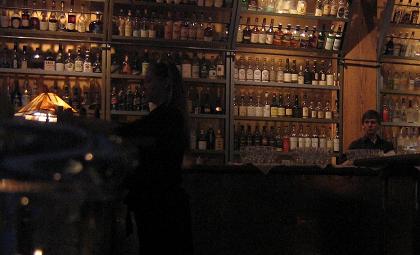
The wall o’whisky and whisky’s friends at The Academy
In the end, the food and beer was just a side show to the gathering over beer. It was really about meeting Troy finally and speaking a bit about his plans for his beer writing whether at his blog or TAPS, the recently revived Canadian beer magazine – that’s him taking a photo of Phin DeMink and  Paul Cain; putting a face to the name of Cass, the founder of Bar Towel as well as contributors like Harry; speaking with Sheryl Kirby, partner of Greg over at Taste T.O; talking to Josh in the end for hours about the economic tensions that are affecting where craft brewing is going; reusing my old jokes like the time the grade one teacher asked what Daddy did and was told “my Daddy takes pictures of beer!”
Paul Cain; putting a face to the name of Cass, the founder of Bar Towel as well as contributors like Harry; speaking with Sheryl Kirby, partner of Greg over at Taste T.O; talking to Josh in the end for hours about the economic tensions that are affecting where craft brewing is going; reusing my old jokes like the time the grade one teacher asked what Daddy did and was told “my Daddy takes pictures of beer!”
The next day I stopped by Church-Key again, making the 50 km detour to Campbellford to pick up some fine local ales. The day was sunny and warm and, because it was Saturday, there were more cars in the parking lot than I had seen before. People were sitting on the porch drinking samples just enjoying John’s beer. The shop was busy. I grabbed a six each of Northumberland Ale and West Coast IPA and drove on home.





